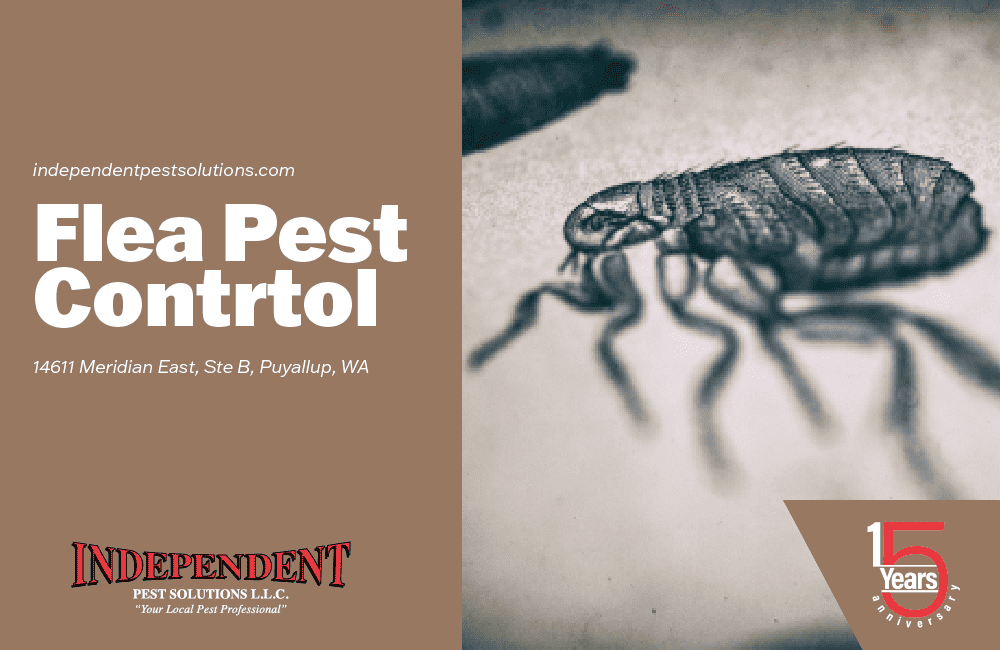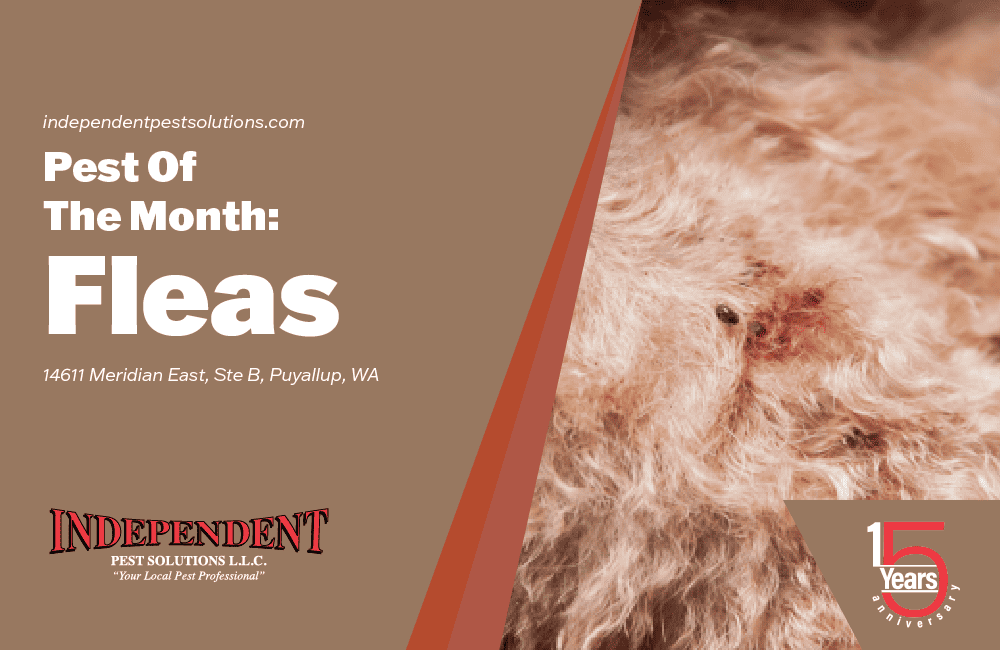Flea Exterminator
The pest of the month for August is fleas. Fleas are a type of blood-sucking insect that usually live on animals. They are parasites, and although they prefer feeding on animals with fur, they can also bite humans. Fleas can’t fly, but they are excellent at jumping. They can infest your home, looking for their next blood meal. Flea infestations are serious problems that need to be taken care of.
Fleas are usually reddish-brown, and have oval-shaped bodies ideal for moving through their host’s fur. Fleas are very small, no bigger than 1/8th an inch. As insects, they have six legs. They have no wings. Their back legs are longer than their other legs and jointed, allowing them to easily jump between hosts and escape danger. Fleas are able to jump a couple feet upwards, and can leap forward up to 200 times the length of their body.
One of the reasons that fleas are so difficult to get rid of is that they are very hardy and adaptable. Fleas are capable of surviving in a variety of climates, although they have a preference for dark, warm, and humid places. When they live outside, they reside in tall grass and shrubbery. Once fleas gain access to your home, they will seek refuge in bedding, carpet, and upholstered furniture while they are waiting for a host to latch onto. Fleas do not sleep, but they are most active during the nighttime.
Fleas are parasites, and their primary source of food is animal blood. Although fleas will feed upon almost any warm-blooded mammal, they prefer feeding on animals with fur because they can hide in it and cling to it. Although the main food source for fleas is blood, most people don’t’ know that fleas are actually omnivores. Fleas also eat decaying plants, dead animal tissues, and feces.
The whole life cycle of a flea can be between a few weeks up to a year, depending on what environment they’re in. Because a flea requires a host for survival, if they don’t have one they can only live about two weeks. There are four stages in the lifecycle of a flea:
- First, the adult fleas mate and lay their eggs in a safe place (usually in the fur of its animal host). Adult female fleas are capable of laying 40 eggs a day, which take between two days and two weeks to fully develop.
- After they hatch out of their eggs, it takes several weeks for flea larvae to grow. They are white, don’t have legs, and incredibly tiny. After between five and twenty days, larvae begin to spin their cocoon.
- The pupal stage for fleas can range between a few days to almost a whole year. Once it feels that there is a viable host nearby, the adult flea comes out of its cocoon. If not, it waits in its cocoon for more favorable conditions. Fleas are most difficult to get rid of while they are pupae.
- Once fleas leave their cocoon as adults, they can begin feeding within a matter of hours. After they start to feed, they are capable of breeding with other fleas. They can lay eggs mere days after fully maturing.
Fleas typically have a lifespan of about 100 days, but can survive for up to a year. In its lifetime, a female flea can lay 2,000 eggs. Fleas reproduce very quickly and can quickly become a huge nuisance. Although there are hundreds of flea species that live in America, homeowners most often face only a few types of them.

Cat Fleas (Ctenocephalides felis)
As their name suggests, house cats are the primary host for cat fleas, but they do also live on dogs. Actually, most fleas found on dogs are cat fleas. Cat fleas are able to live without food for long periods of time. Once they begin feeding on blood, they can start reproducing. Cat fleas can lay 4,000 eggs in the fur of your pet throughout their lifespan. If you notice that your pet is often biting or scratching themself, it could mean that they have cat fleas.
Dog Fleas (Ctenocephalides canis)
Dog fleas are usually found living on dogs, but they are also known to bite humans. Although cat fleas can get meals from most warm-blooded creatures, dog fleas aren’t able to survive drinking feline blood. Your dog might have dog fleas if they are continuously scratching and biting themself. If a human has been bitten by a dog flea, they usually develop a rash and small red bumps.
Human Fleas (Pulex irritans)
Human fleas are also known as house fleas, and they are able to live on humans and feed on a variety of mammals. In America, they are very rare.
Chigoe Fleas (Tunga penetrans)
This type of small flea is capable of burrowing into their host’s skin, where it lays its eggs. They are also known as sand fleas, and usually infest the feet of their host. Thankfully, they are pretty rare in America and like to live in subtropical and tropical climates.
Sticktight Fleas (Echidnophaga gallinacea)
Sticktight fleas can sometimes live on household pets, but they usually live on birds and other types of poultry. This type of flea embeds its head beneath the skin of its host to feed on their blood.
Rat Fleas (Xenopsylla cheopis)
True to their name, rat fleas feed on rodent blood. Rat fleas are able to carry many dangerous pathogens, responsible for diseases such as typhus and the bubonic plague. Rat fleas are more abundant in warmer climates.
Fleas are adept at traveling and finding new hosts. They can jump from a warm-blooded animal to another one. Fleas locate hosts by detecting their movement, body heat, and the vibrations from their breathing and movements. If you suspect that you have a flea problem, it is important that you get proper pest control. Flea bites are painful and itchy, and they can also lead to allergic reactions or disease. For flea pest control in Puyallup, Independent Pest Solutions are the experts you can rely on. We will get rid of the fleas and prevent them from returning so that you, your pets, and your family can feel comfortable in your own home again.

SEND YOUR MESSAGE


